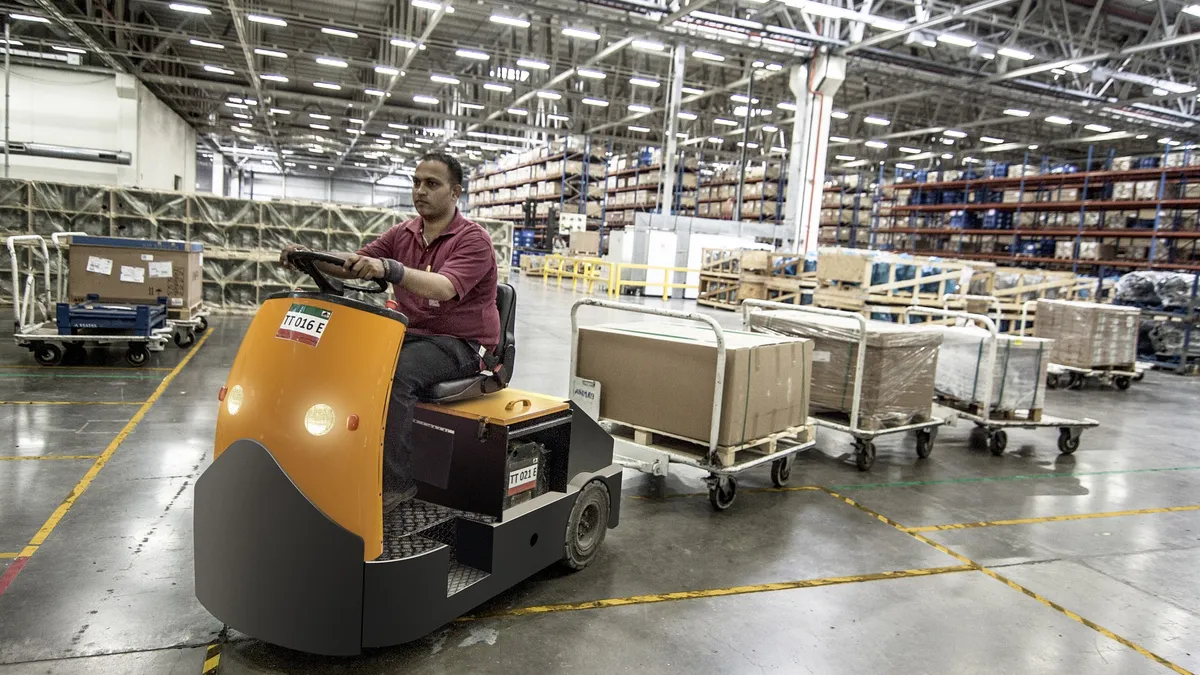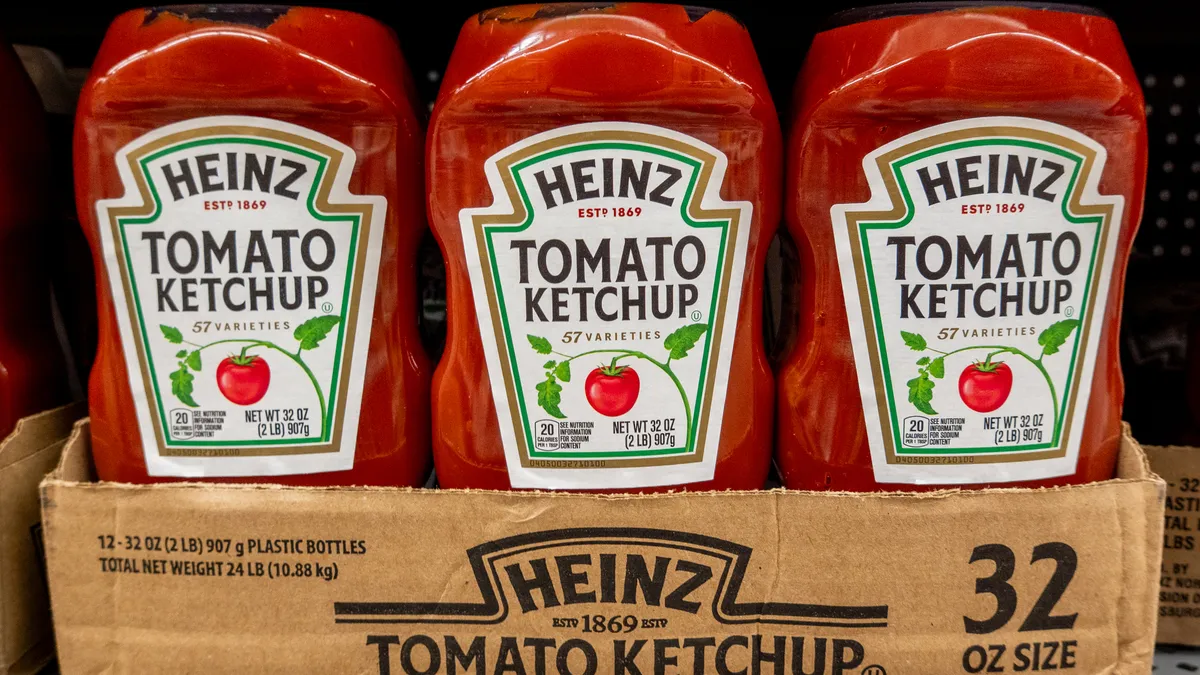Hang out on any trade show floor these days and there’s one topic that seems to dominate conversations: predictive analytics. Still relatively new in the supply chain arena, the technology promises to help companies become proactive rather than reactive with their systems. The potential for cost savings and reduced downtime is enticing, but the question remains whether the technology is ready in for areas of the warehousing environment.
In particular, facilities are still sorting out the current value of predictive analytics in regards to maintenance, repair and operations (MRO). While the technology certainly shows potential, and is proving itself out in other areas, predictive analytics with MRO may not quite be ready for prime time.
There’s good reason for this, said John Rosenberger, director of iWarehouse Gateway at the Raymond Corporation. "The potential is there for predictive analytics in regards to MRO," he told Supply Chain Dive, "but a facility must first be connected before it can be predicted."
A 2018 Deloitte study reveals among 200 supply networks, most have a way to go with collecting digital data that would be necessary for predictive technologies. Thirty-two percent planned to implement data collection in the next 12 months, while 28% were actually implementing. Another 33% were prioritizing implementation among strategic objectives, while another 7% had not considered it yet.
In other words, it’s worth keeping the horse before the cart.
Consider the value
Warehouse managers considering predictive analytics for MRO might be surprised to learn how strong a history of data collection is needed, said Rosenberger. If the components for a particular model do not fail often, an operations manager may need as much as 10 years worth of data. Without that level of data, he explained, the predictive technologies can have difficulties delivering accurate forecasts and value. "You need a cause and effect relationship," he said. "It is a series of steps to get there."
Facilities need to collect a variety of information to deliver results. In a lift truck, for instance, data would include travel, lift, hour meter utilization of drive motors, hydraulics, control handles, bearings, impacts/shocks frequency, among other factors.
"A facility must first be connected before it can be predicted."

John Rosenberger
Director of iWarehouse Gateway, The Raymond Corporation
The end result is predictive technologies backed up by enough data collection might produce a solid estimate on when a lift pump will fail. This is useful in that a facility can have a spare pump on hand around that timeframe, but it wouldn’t pay out to replace it proactively. "Just because a model tells you something will fail at a certain point, the economies aren’t there to take that pump out before it actually does fail," said Rosenberger.
Another consideration is the fact that when entire pieces of equipment need to be replaced, facilities managers are starting at square one again in terms of data collection and building enough history for predictive tools to be useful.
First you need data
One issue to understand is that, while the information predictive analytics can deliver is valuable, in the warehousing environment, it’s not as mission-critical. Industries like airlines and rail are big adopters of the technology, but that’s because they must. "Planes and trains need to stay in the air and on the rails," said Rosenberger. "So predictive technologies can be essential there."
In the warehouse, however, the stakes aren’t as high. "The worst that can happen is the lift truck stops working," said Rosenberger. "Many warehouses have one or two trucks of the same type that can fill in while the other is being repaired."
Compare this to air or rail, where at worst case lives may be at stake if a part fails, and best case deliveries are substantially delayed as necessary repairs are made.
Still, a warehouse can’t even get to the level of proficiency needed to predict breakdowns if it can’t provide the necessary data for predictive technologies. A gap remains in the amount of data collected in the average warehouse and the amount that is needed for predictive analytics to be worth the investment. Consider the ROI in air or rail, where equipment runs into the millions, versus DC equipment like a $40,000 lift truck.
The good news, said Rosenberger, is that on the whole, companies across the board are improving with regard to data collection. "In the past five years, we’ve seen a higher adoption rate for telematics systems," he explained. "At the same time, early adopters of data collection systems are upping their game and increasing usage."
A look in the crystal ball
For the rare facilities in a position to add predictive analytics for MRO, integration with existing warehouse management system (WMS) or ERP should be fairly seamless. The platforms should be able to export the data collected right into the predictive technologies for analysis and results.
As the technology evolves, a faster model of prediction for MRO should be part of future generations, according to Rosenberger. "A model that can work off a couple of years of history rather than a decade would be useful," he says.
To get there, warehouse managers should prioritize the implementation of digital data collection while the equipment is running. Also, leverage cost-effective sensors from other industries, and build digital networking technologies into the equipment to liberate the data, Rosenberger recommends.
"We’re not quite there yet for every warehouse, but we’re headed in the right direction."

John Rosenberger
Director of iWarehouse Gateway, The Raymond Corporation
The dream, of course, is to use the technologies to tighten up operations and squeeze dollars out of the budget. "For every 1% of accuracy you have, you can use your resources that much more efficiently," Ed Frazelle, CEO of RightChain, told Supply Chain Dive. "You can plan your resources so that there are no shortages and no overages."
While the time may not be right yet for most warehouses to adopt predictive technologies for MRO, the day will likely come, said Rosenberger. "As data collection is more widely adopted and as machines become smarter, facilities will be able to get better at predictability," he said. "We’re not quite there yet for every warehouse, but we’re headed in the right direction."
This story was first published in our weekly newsletter, Supply Chain Dive: Operations. Sign up here.




















